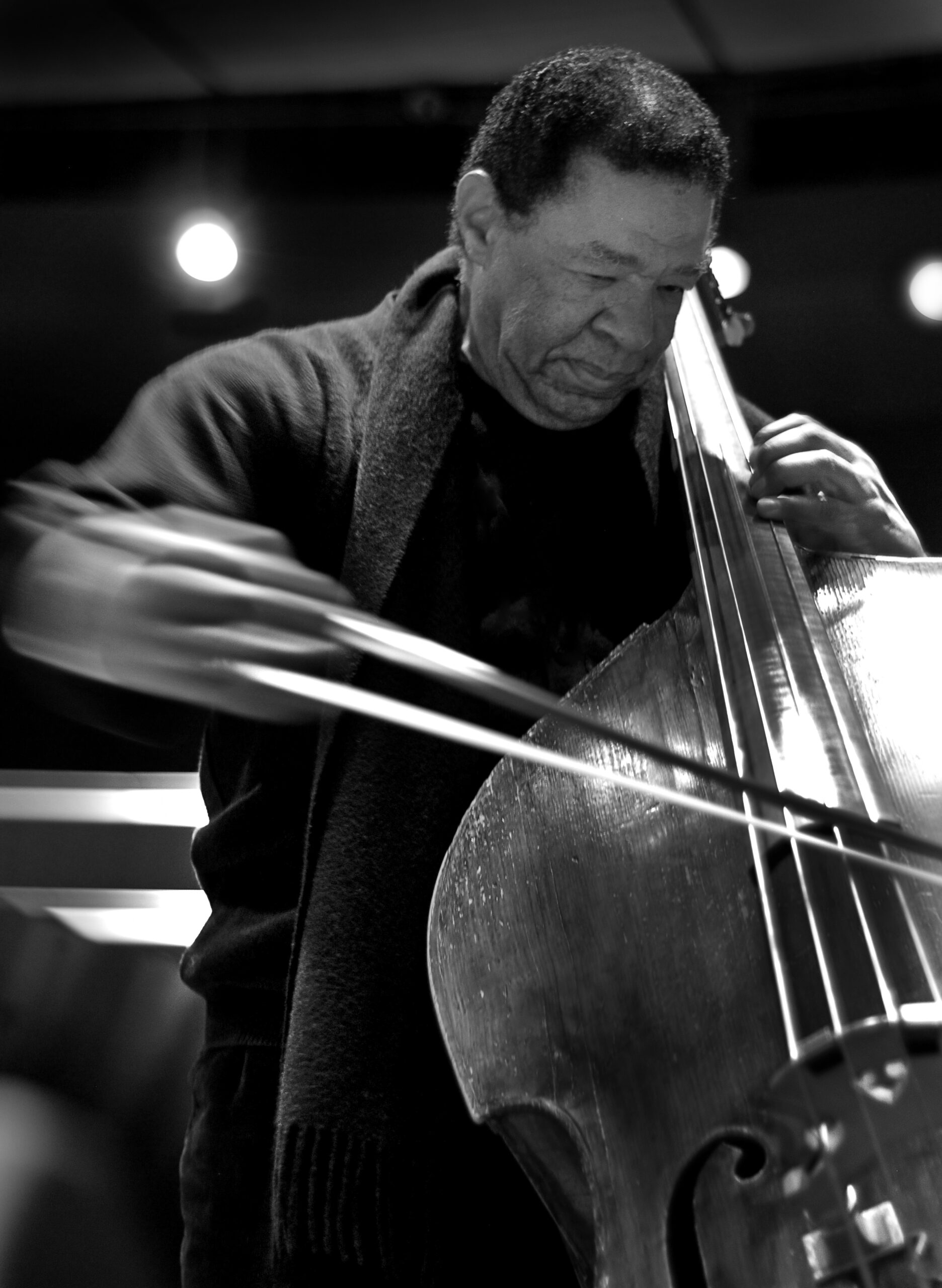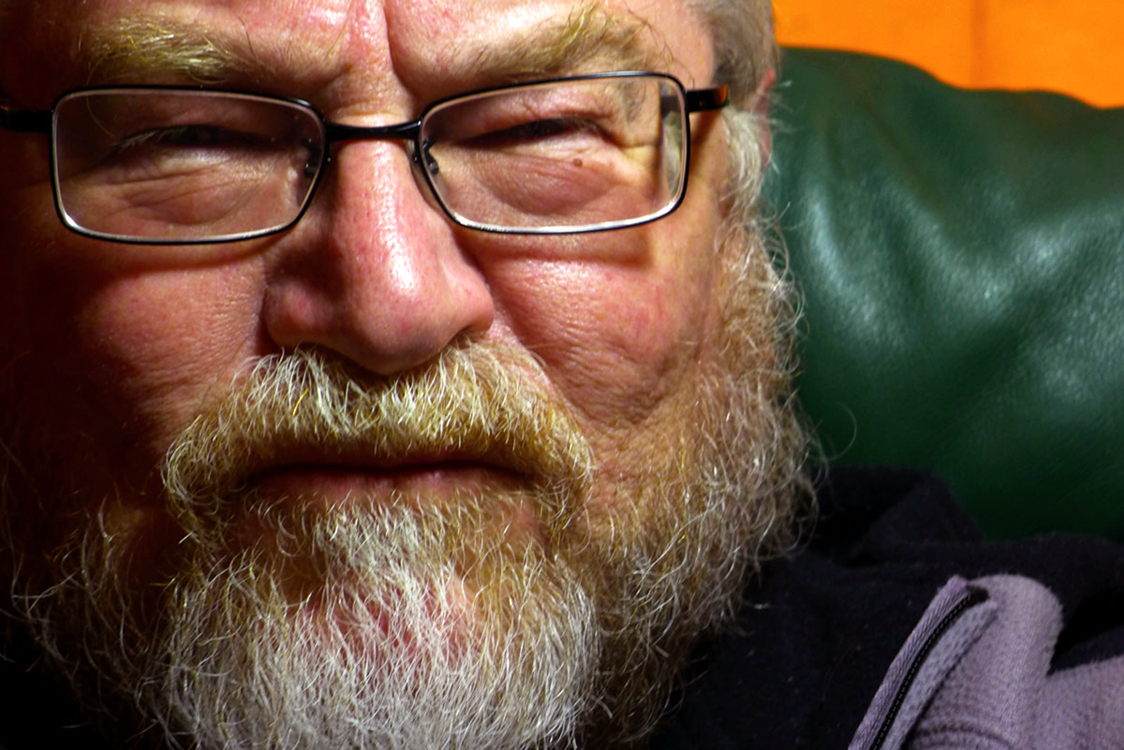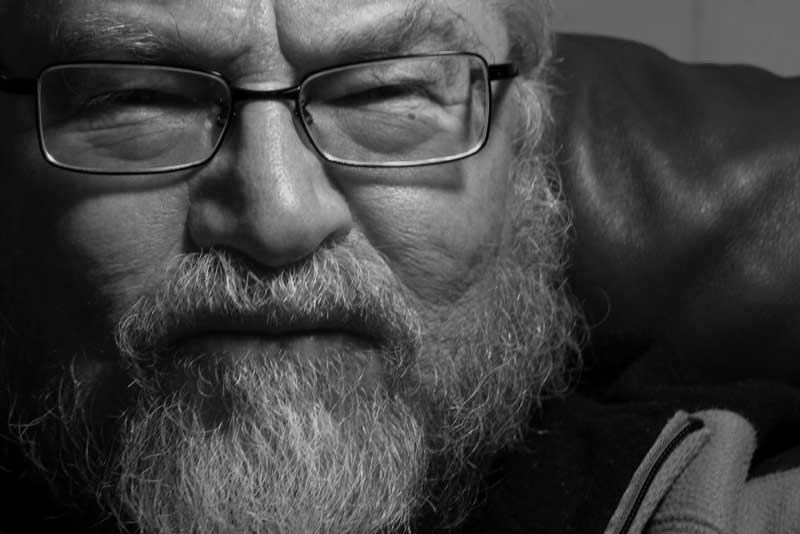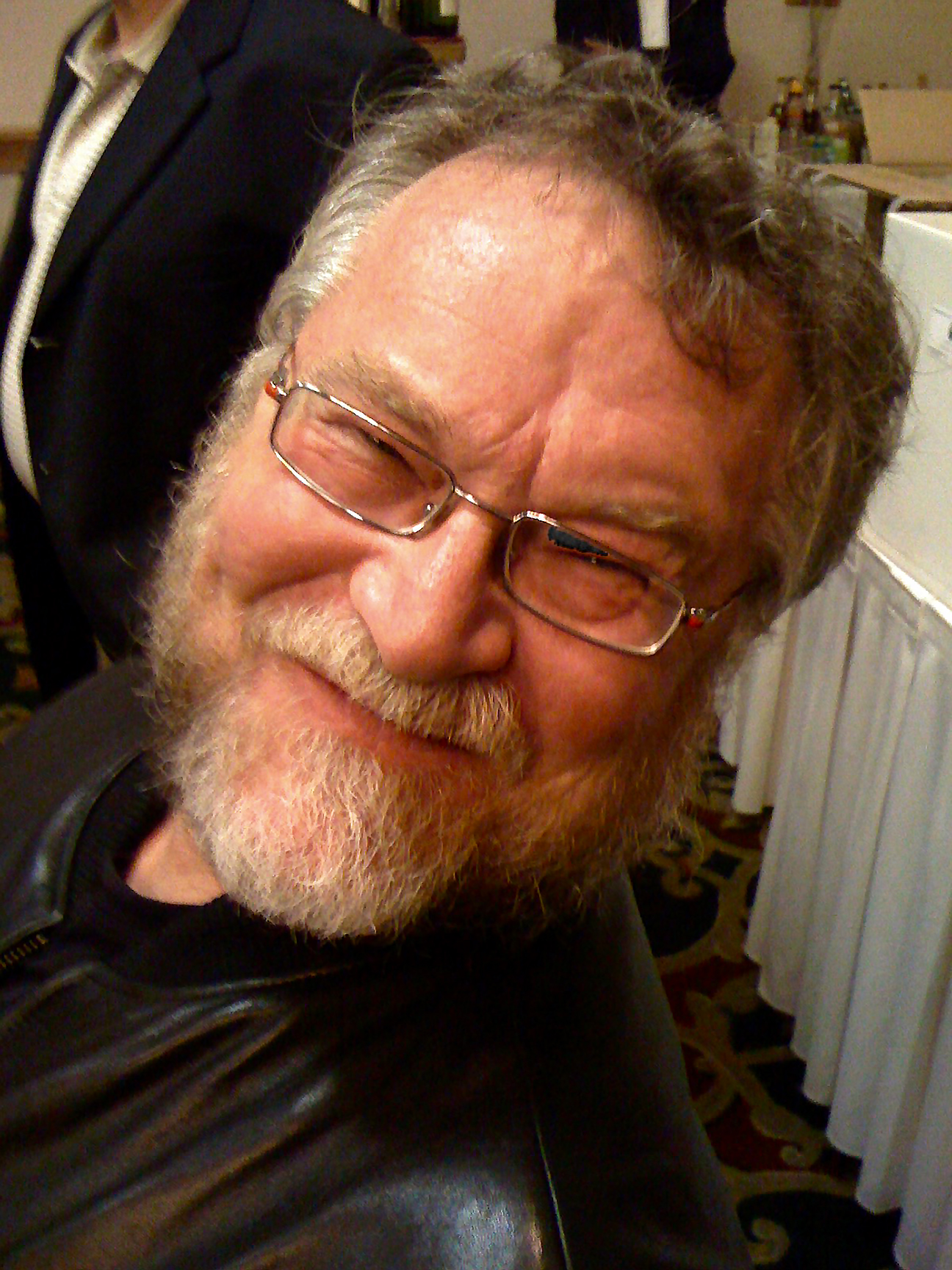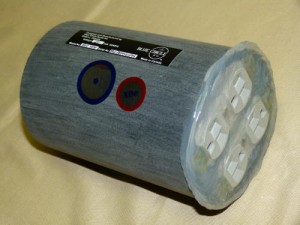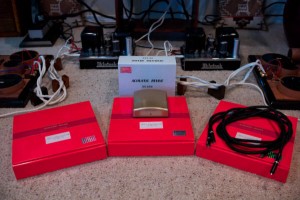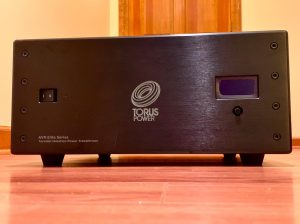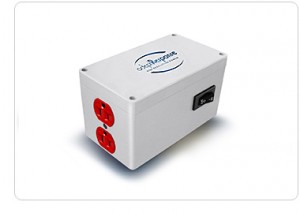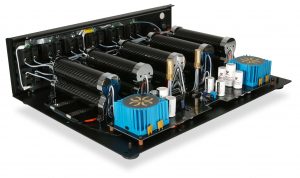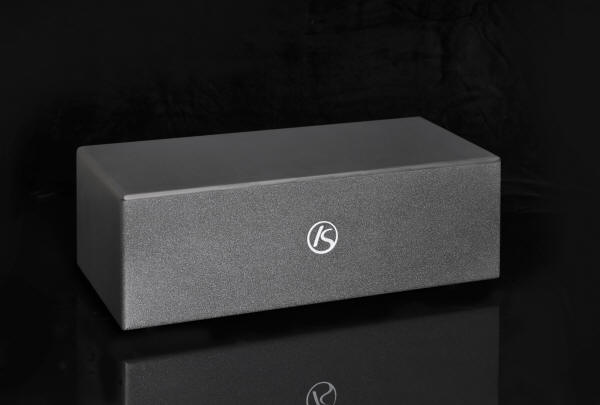
The First Blueport "Audio Transcendence" Award
(With a response by Marshall Nack)
What does it mean that the onset of Global Warming coincides with the arrival of a theoretical Golden Age of audiophile possibilities? I'll think about that awhile as the emergence of DSD (direct stream digital), after a quarter-century languishing in audio twilight with diminishing attention, finally suggests the dawn of a long-deferred promise of audio nirvana. Our current era, in fact, might be steadily approaching a moment of audio realization hoped for earnestly, but mythically, in the last decades of the 20th century. That century now appears like a bicycle quickly disappearing in a rear view mirror.
To such blissful hope, let me simply note that, if I were to concoct an award never imagined until now – BluePort's "AUDIO TRANSCENDENCE" Award, designating the creation of an audio product that transforms the way music is accurately captured and/or faithfully enhanced—Kubala-Sosna's XPander would be its inaugural recipient. Their A/C unit greatly improves both sides of music's dialectical reality: recorded sonic capture and playback luminosity. This visually impressive but unintimidating box is the Joe Louis of electrical enhancement devices. It shows up in your listening rig with the understated bluntness of a first round left jab K.O.—quick, on target, unforgettable and jarringly successful. When you plug gear (up to seven units) into its surprisingly friendly grasp, your first response will be as nonchalant as shaking hands with a pleasant next-door neighbor. Your next response will be to wonder how such profound enhancement and total audio improvement transformed your listening universe all at once.
The explicit value honored by my imaginary award intends to call attention to a somewhat overlooked or under-valued sonic quality: the haptic immediacy of sound and feeling when recording work and sonic playback lovingly preserve the nearly infinite complexity of "music's textured dynamics in three-dimensional ambient space." Haptic immediacy is that subtly coherent musical and sonic synergy in which lyrical sound is experienced as HERE, viscerally in the room where you are listening, TRUTHFULLY PRESENT not as a "recording" but as the thing itself, musicians within reach in real time and space. You do not "overhear" music in such totally "present" modes of textural and temporal VIVIDNESS. You receive it directly, immediately... haptic, like flesh touching flesh, feeling's raw, insistent alertness heightened.
The central virtue of the XPander is its mysterious ability to make each attached piece of audio-related equipment perform at a significantly higher level of sonic detail and musical relaxation. Never in the solitude of my listening realm have I placed a piece of gear, of any kind, into its overstocked racks that so thoroughly transformed the total musical envelope and detailed vivacity of my system with so much added resolution. I've heard (and used) many A/C units of various sorts. I've recently heard, enjoyed and been hugely impressed by another A/C box with a noble pedigree that enacts powerful improvements in joyful musical delineation. That exquisite unit is not yet in commercial production. But no single unit—preamp or amp; DAC or transport or cable(s), et al.—has ever approached the effortlessly renascent transformation of truthful and engaging sonic space and musical meaning as the XPander A/C box's seven inputs now routinely (sublimely) bring to my listening experience.
Doubtless this unit's magic evolves from its control of electrical stability and its accompanying sonic authority and ease. Whatever other focus it grants electron flows across an untrammeled pulse of electrical bundles among multiple separate circuits, the XPander conspires (in the most innocent possible use of that term) to craft the unshakable illusion of sonic and ambient immediacy ("hereness" and "thereness") from my own recordings and those of Rudy van Gelder, Jim Czak, Les Koenig, the Marciano recording team of Brooklyn, and Jim Anderson, among many others. The ecstatic result of the unit's Zen force is literally beyond my ability to fully describe.
Who cares, since the purpose of music's heavenly and demonic dissolution of ordinary human violence and confusion—which music accomplishes more often and better than any other semi-hallucinogenic medium—is, precisely, miraculous sonic enchantment. Words are humbled by such magic, humanity humiliated by the salvation of momentary angelic redemption.
At its introductory price of $4800 ($5400 after January 1, 2015) this astonishing box, sedately dubbed the XPander, is an absolute bargain among the quirky price irregularities of high-end gear. It neither dazzles the eye with false luxury nor misses its innovative objective with ancillary razzle-dazzle. This is a hugely musical unit. It honors musicality. It enhances musical witness and pleasure. Without fail, it has taught me things about my own recordings I'd never gleaned... small and large elements, such as resonant reflected embellishments (or intrusions) at the difficult-to-discern level of 16kH-18.5kH; a slight bloat to an electric bass riff previously unnoticed; extremely detailed micro-dynamic accents by a world class New York drummer that never revealed themselves before. More than that: the simple fact, buried until now, that my dual set of Sopranino speakers—designed to reproduce evanescent wisps of ambient decay that usually go unheard buried in the blotch of sonic elements with greater dynamic force—do IN FACT deliver exactly what the gurus at Enigma Acoustics intended to accomplish with their elegant electrostatic super-tweeter speaker reinforcement.
Still more: music is simply and truly more musical with the XPander in tow. The fun of listening is hugely increased. Recordings I've loved for five decades or more (Miles Davis' sextet session right before the Kind Of Blue dates, "On Green Dolphin Street," one of the most brilliant moments in jazz history) have become spooky deep with the feel of flesh and breath and spiritually emotional interplay among great players at their most alert and acutely interactive. Ellington's 1958 Jazz Party, with Dizzy Gillespie and a consort of percussion instruments, never sounded so well-delineated and vibrantly here-and-now.
Conclusively Concluded (Trophy Conferred)
In our dumbfounding professional-commercial universe of audio greatness and bombast, where discerning music lovers can actually build remarkable sound systems at nearly bargain basement prices, and where the sucker born each moment gets taken to the cleaners as fast as a pool-shark spots him coming through the door, that rare thing (honest musical value and fair-priced equipment serendipity) is not impossible. If the long-rumored era of something approaching audio nirvana is truly on the horizon, intermittent optimism in the margins of the audiophile kingdom that confuses inflated equipment prices with innate sonic quality must now de-escalate hype for the purpose of earning "street cred."
The growing DSD phenomenon deserves serious attention and widespread demonstration of its superiority. Two opposing tendencies (the delusion that conflates audio brilliance with high price tags; the good judgment of those with savvy who trust their own hearing) will continue to spar. Bad habits do not easily perish. And yet, the covert conspiracy of gullibility with tactical skullduggery is not intractable. The high-end audio world's self-subversion is ameliorated already, concretely, by exemplary and affordable sonic creations from the imaginative efforts of product designers such as Richard Vandersteen, David Blackmer, Andreas Koch, Robert Lee, Dave Magnan, Serguei Timachev, Steve McCormack, Ryan Tew, Gary Koh, and the genuinely remarkable team of Howard Sosna and Joe Kubala whose world class Elation! and Emotion cables staked out a nearly unapproachable height of audio resolution that, across ten years or so following their arrival on the audiophile scene, has established a standard for haptic sonic immediacy that deserves an award all its own.
It, therefore, receives my "PFO Product of the Year" for 2014—symbolic of the BluePort Audio Transcendence award inaugurated here… conferred on Kubala-Sosna for the you must hear it to believe it transformative sonic achievement of their state-of-the-art XPander A/C unit.

Marshall Nack's response to the Merod XPander review
It was a drowsy Sunday afternoon and needing something to spice up the down-time, I opened my email and found Jim Merod's XPander review. Jim's copy, in his inimitable style so unlike my own, has off-the-charts entertainment factor, although parts of it left me pondering his intent. I pulled out the dusty Webster's (a 1988 edition) and kept it handy for those long disused words he's fond of, like haptic.
I solidly agree with one of Jim's more global pronouncements, that "…the emergence of DSD… finally suggests the dawn of a long-deferred promise of audio nirvana." I have found multiple examples of current generation digital products using DSD that take you places the earlier gear never could. And people in the know whose opinions I value say that with double, or even quad, DSD, we are at master-tape sound quality – in our home systems! This is unprecedented.
But, coming back to the XPander product under review, there is no dispute: Jim and I are in complete agreement. The XPander is that rare product that grants both "…sonic authority and ease." Moreover, it "…is a hugely musical unit. It honors musicality."
Yes.
When you get down to it that is what truly matters.
Marshall Nack




